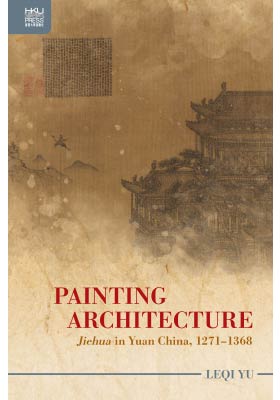Painting Architecture
Jiehua in Yuan China, 1271–1368
(圖繪建築:元代界畫,1271–1368)
ISBN : 978-988-8754-23-6
June 2022
216 pages, 6″ x 9″, 54 b&w and 12 color illus.
- HK$700.00
Ebooks
Also Available on
In Painting Architecture: Jiehua in Yuan China, 1271–1368, Leqi Yu has conducted comprehensive research on jiehua or ruled-line painting, a unique painting genre in fourteenth-century China. This genre relies on tools such as rulers to represent architectural details and structures accurately. Such technical consideration and mechanical perfection linked this painting category with the builder’s art, which led to Chinese elites’ belittlement and won Mongol patrons’ admiration. Yu suggests that painters in the Yuan dynasty made new efforts towards a unique modular system and an unsurpassable plain-drawing tradition. She argues that these two strategies made architectural paintings in the Yuan dynasty entirely different from their predecessors, as well as making the art form extremely difficult for subsequent painters to imitate.
“Architecture has been a subject of Chinese painting for two millennia, but has remained elusive. Painting Architecture explains the reasons as well as why the thirteenth and fourteenth centuries are pivotal. The book also translates the vast writings on architectural painting, places the paintings in historical context, and assesses the relation between the paintings and actual buildings. The superior scholarship and original interpretation ensure that paintings of architecture will be part of future discourse about Chinese painting.”
—Nancy Steinhardt, professor, University of Pennsylvania
“Focusing on the development of jiehua in the fourteenth century when the Mongols ruled China, Yu’s book raises issues beyond the field of painting history, including architectural history, aesthetics, and social-historical studies. It is a long-awaited contribution to a rarely studied painting genre and an admirable accomplishment of multidisciplinary research on Chinese art.”
—Qianshen Bai, associate professor emeritus, Boston University





